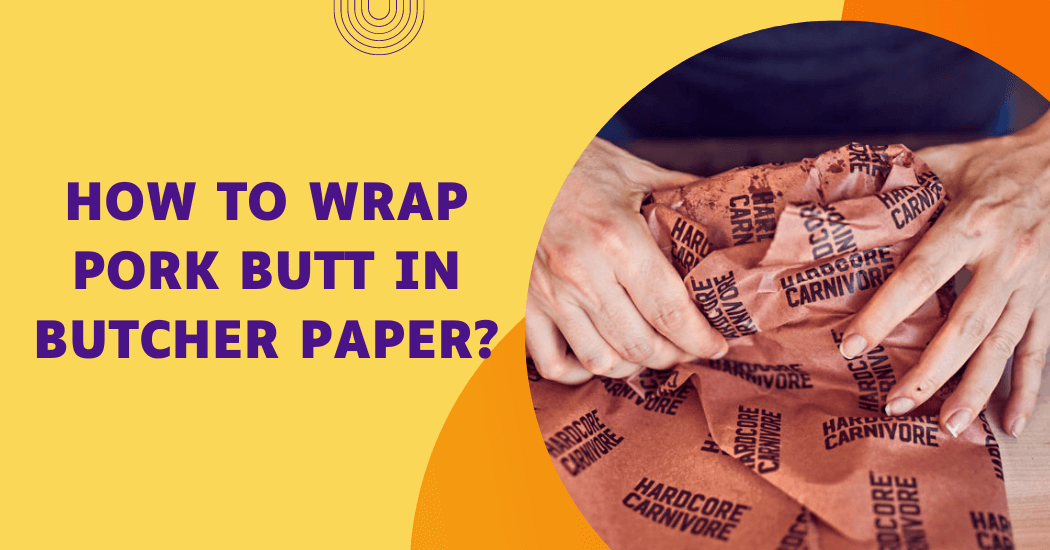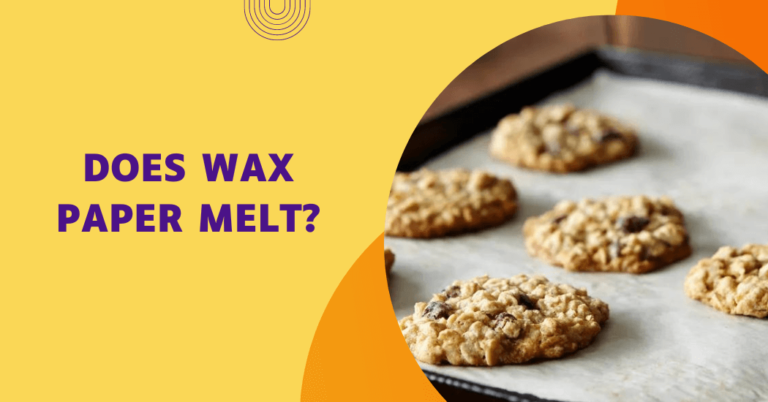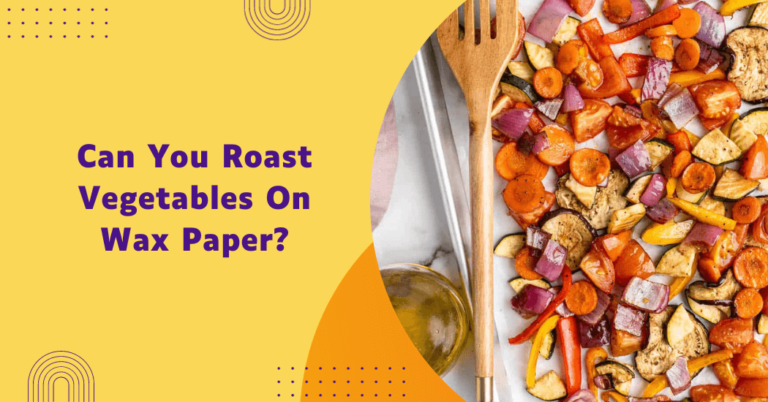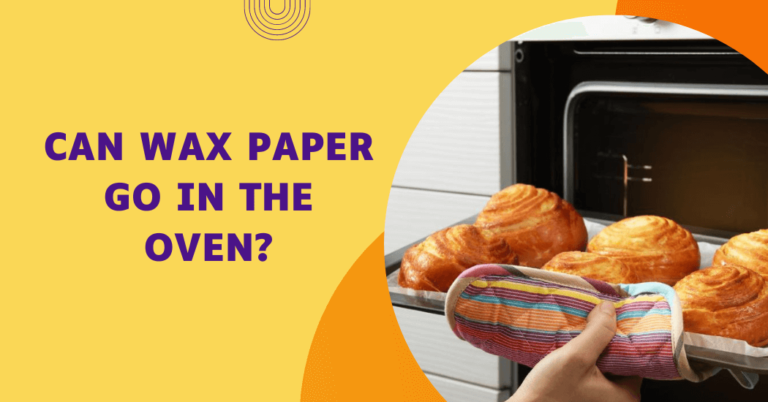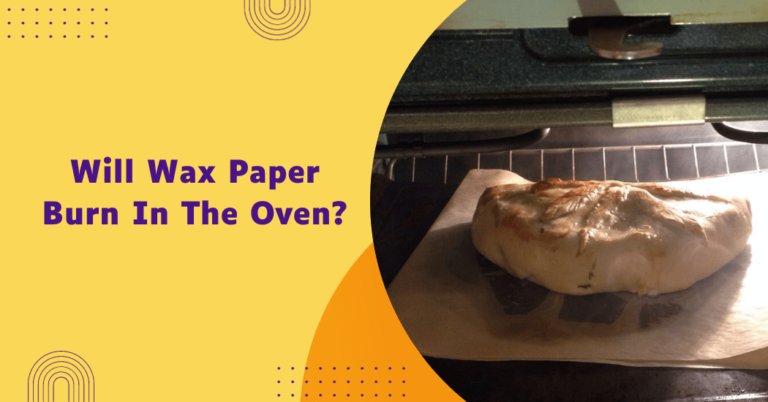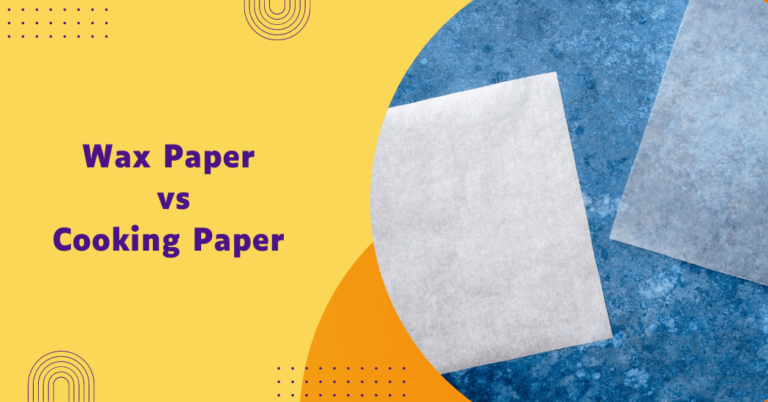How to wrap pork butt in butcher paper?
When it comes to cooking pork butt, a beloved cut is known for its rich flavor and versatility, there are various methods to achieve tender and succulent results. One popular technique gaining attention among pit masters and home cooks alike is wrapping pork butt in butcher paper.
But how exactly do you wrap pork butt in butcher paper and why is it considered the secret weapon in the world of barbecue?
In this guide, we will delve into the art of wrapping pork butt in butcher paper, exploring the benefits, step by step process and essential tips to ensure your culinary endeavors result in a mouthwatering masterpiece.
Whether you are a beginner in the kitchen or have been cooking for years, these instructions will help ensure that your pork butt comes out perfectly every time. So read on!
Wrap Pork Butt in Butcher Paper
Wrapping a pork butt in butcher paper is a well-acknowledged barbecue technique that enhances moisture retention while creating an appealing bark on the meat.
Here’s a unique, easy-to-follow guide on executing this method:
- Prepare your Pork Butt: Initiate the process by layering your pork butt with your favorite rub or seasoning. Let it rest for a while to allow the flavors to infuse.
- Butcher Paper Preparation: Opt for butcher paper that is not coated or waxed. Rip off a piece large enough to encompass the pork butt fully, leaving a little extra for folding.
- Pork Butt Placement: Locate the brisket on the central part of the butcher paper, ensuring the fat side is upward-facing.
- Side Folding: Elevate one side of the butcher paper, folding it over the pork butt. Press it gently against the meat, molding it to its form.
- End Folding: Envelop the ends of the butcher paper over the pork butt, mirroring the gift wrapping. This step seals in moisture and heat.
- Twine or Clips Securing: Utilize butcher’s twine or food-safe clips to secure the paper foldings. Ensure the fit is snug but not overly tight to allow steam to escape.
- Leak Inspection: Scan the wrapped pork butt for any potential gaps or openings that might let steam out. The butcher paper should be tightly sealed around the meat.
- Continued Cooking: Reintroduce the wrapped pork butt to the smoker or grill, fat side up and continue cooking to your preferred temperature until the meat attains the desired internal temperature.
- Temperature Monitoring: Regularly check the internal temperature of the pork butt with a meat thermometer. Aim for an internal temperature of about 195-203°F (90-95°C), where the meat tenderizes and becomes easy to pull apart.
- Unwrapping and Resting: Once the pork butt attains the desired temperature and softness, carefully remove it from the heat source. Unravel the butcher paper carefully, being wary of any escaping hot steam.
Pros and cons of wrapping pork butt in butcher paper
Wrapping pork butt in butcher paper come with its own set of advantages and disadvantages:
Pros:
- Preserves Moisture: The butcher paper seals in the meat’s natural juices, preventing them from evaporating during the cooking process. This retention of moisture results in a more succulent and tender pork butt.
- Enhances Bark Formation: The porous nature of butcher paper allows some degree of smoke penetration, contributing to a flavorful and appealing bark on the pork butt.
- Controlled Cooking Process: The butcher paper acts as a heat shield, reducing the risk of the meat’s exterior burning or drying out before the interior has been fully cooked.
- Easier Handling: Wrapping in butcher paper can make it easier to handle the meat, especially if you are cooking significant cuts like pork butt, as it provides a clean and convenient way to transport and serve the meat.
Cons:
- Potential for Leaks: If not properly secured, steam can escape from gaps in the butcher paper, leading to a loss of moisture and potentially drier meat.
- Additional Expense: Butcher paper is an extra expense and not all grocery stores carry it, which may require a special trip to a butcher or an online order.
- Learning Curve: Wrapping pork butt in butcher paper can be a little tricky for beginners and it may take a few tries to perfect the technique.
- Less Control over Moisture: Unlike foil, which seals in moisture tightly butcher paper allows some moisture to escape. This can be a pro for some but if you want to retain as much moisture as possible, foil might be a better choice.
Wrapping pork butt in butcher paper is a popular method in barbecue because it strikes a balance between moisture retention and bark formation.
The choice to use it depends on your preference for bark thickness, moisture retention and the flavor profile you want to achieve. Experimentation is often the best way to determine which wrapping method works best for your taste.
Common mistakes to avoid when wrapping pork butt
- Not allowing the rub or seasoning to sit: The rub or seasoning needs time to seep into the meat and enhance its flavor, so make sure you give it enough time before wrapping.
- Wrapping too loosely: If the butcher paper is not wrapped tightly around the pork butt, steam may escape which can lead to dryer results.
- Using waxed paper: Waxed paper is not recommended for wrapping pork butt as it can impart an unpleasant flavor and make it difficult to get a good bark.
- Not checking the internal temperature regularly: The only way to be sure that your pork butt has been cooked to the desired level of tenderness is by using an accurate meat thermometer.
- Not allowing the meat to rest after cooking: Allowing your pork butt to rest for a minimum of 15 minutes before unwrapping will ensure that all those delicious juices are held in the meat rather than escaping when you cut it open.
- Cutting into the butcher paper when unwrapping: Carefully unraveling and removing the butcher paper is key in ensuring that all those juices and flavors are held within the meat. Cutting or tearing into the butcher paper can potentially cause them to escape.
- Not using enough butcher paper: Ensure that the butcher paper is large enough to cover the pork butt fully and leave a little extra for folding. This will help to keep all those juices in and make sure that your finished product is moist and delicious.
- Reusing butcher paper: Make sure you discard the used butcher paper after each use as this will help to ensure food safety and prevent any potential contamination.
Alternatives to wrap pork butt in butcher paper
Wrapping pork butt in butcher paper is not the only option there are several alternative ways to wrap a pork butt before cooking.
- Aluminum Foil: Wrapping your pork butt in aluminum foil can help to hold in moisture and prevent burning or drying out of the exterior.
- Butcher Twine: Tying up the pork butt with butcher twine can help to keep it securely together so that all the juices stay in and none of them escape.
- Plastic Film: Wrapping your pork butt in plastic film or cling wrap will help to preserve moisture and ensure all the flavors are held in while cooking.
- Fabric Wrap: Fabrics such as linen or muslin can be used to wrap your pork butt. This will help to keep the moisture in and provide some insulation, resulting in a juicy and flavorful end product.
- Sous Vide: This is a process of cooking the pork butt in an airtight sealed bag or pouch submerged in a temperature-controlled water bath. The low and slow approach helps to ensure that even cooking and preserves the meat’s natural juices.
No matter which method you choose, it is important to make sure that your pork butt is cooked thoroughly before eating.
When choosing an alternative method to wrap your pork butt, take into consideration the environment in which it will be cooked and the desired result you want to achieve.
Final Words
Wrapping a pork butt in butcher paper is a simple yet effective technique for enhancing the flavor and tenderness of your smoked or barbecued pork. By following the steps outlined in this guide, you can achieve a delicious and moist result that will surely impress your guests.
Butcher paper allows the meat to breathe and develop a beautiful bark while protecting it from excessive heat and smoke. It also helps to maintain a consistent temperature during the cooking process. Remember to choose high-quality butcher paper, monitor your cooking temperatures closely and be patient as you smoke or barbecue your pork butt to perfection.
With practice and attention to detail, you’ll master the art of wrapping pork butt in butcher paper and create mouthwatering dishes that are sure to be a hit at any gathering.
